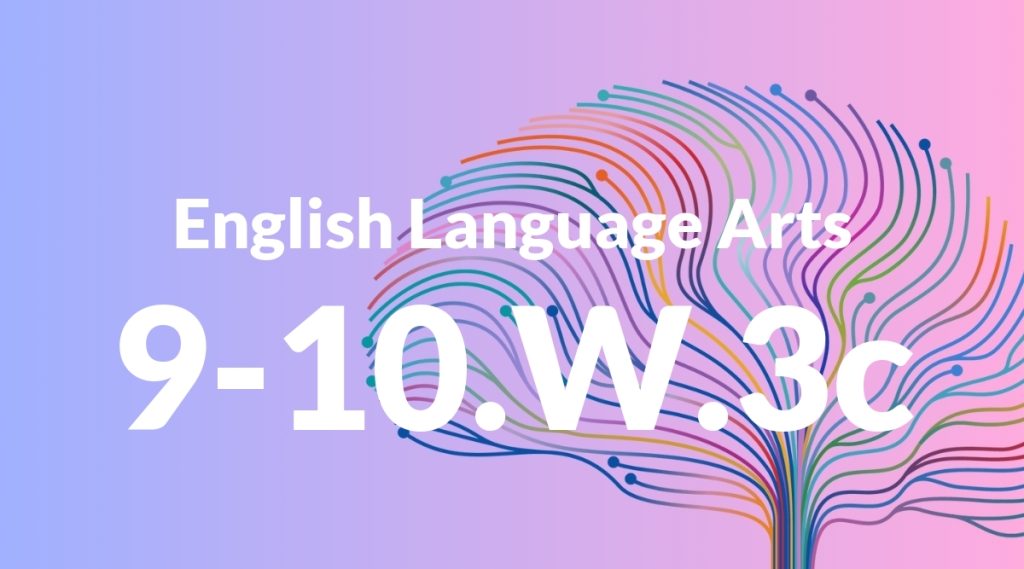Standard: 9-10.W.3c – Use a variety of techniques to sequence events so that they build on one another to create a coherent whole.
Grade level: Grade 9-10
Subject: English Language Arts
Domain: Writing
Teacher Overview
This standard focuses on teaching students how to effectively sequence events in their writing to create a coherent and engaging narrative. Mastering this skill is crucial for developing strong storytelling abilities and for organizing information in a logical manner across various types of writing. Students should have a basic understanding of narrative structure, including the concepts of beginning, middle, and end. They should also be familiar with basic writing techniques and have some experience in writing coherent paragraphs.
After mastering this standard, students will be able to craft more complex narratives and essays that demonstrate a clear and logical progression of ideas. They will also be able to apply these sequencing techniques to other forms of writing, such as research papers and technical writing.
Common Misconception 1
A common misconception is that sequencing events merely involves listing them in chronological order. This is incorrect because effective storytelling often requires more complex structures, such as flashbacks, foreshadowing, and parallel plots.
Intervention 1
Introduce students to different narrative techniques through examples and exercises. Encourage them to experiment with these techniques in their writing assignments.
Common Misconception 2
Another misconception is that all events in a story must be of equal importance. This is incorrect because emphasizing key events and varying the pacing can significantly enhance the narrative.
Intervention 2
Use examples from literature and film to demonstrate how pacing and emphasis are used to highlight key events and build tension. Provide students with exercises to practice these techniques.
Prerequisite Knowledge
Students should have a basic understanding of narrative structure, including the concepts of beginning, middle, and end. They should also be familiar with basic writing techniques and have some experience in writing coherent paragraphs.
Subsequent Knowledge
After mastering this standard, students will be able to craft more complex narratives and essays that demonstrate a clear and logical progression of ideas. They will also be able to apply these sequencing techniques to other forms of writing, such as research papers and technical writing.
Instructional Activities
- Create a storyboard for a short film or video project.
- Write a short story that includes flashbacks and foreshadowing.
- Develop a timeline for a historical event and write an essay based on it.
- Organize a research paper by outlining the main points and their sequence.
- Plan a series of lessons or presentations with a clear progression of ideas.




